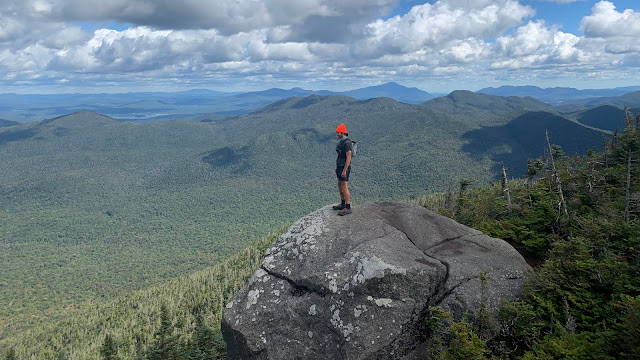This morning was in my sights for a long paddle from Menemsha around the Elizabeth Islands and back. The water stays warm into October, and late-summer typically produces a fair share of flat wind days like today. But when my alarm went off at 5am, I awoke to thick fog. My annual September paddle to the islands would have to wait until another day. Instead, I made the best of a beautiful morning and paddled from Menemsha to the old Brickyard and back (a four mile paddle). I put in at Menemsha Beach at 8:00am where a pair of elderly woman had just dove in; "We swim here every morning until about mid October!" I was treated to a pair of peregrine falcons on a cliff, schools of striped bass below, colorful foliage, and hordes of fishermen competing in the Martha's Vineyard Striped Bass and Bluefish Derby. As they say, September is the best time to be on the Vineyard.
Total Pageviews
Saturday, September 26, 2020
Tuesday, September 8, 2020
The Oldest Hardwoods in America
Tucked away in perched deep, peaty swamps throughout southern N.H. are pockets of one of the Granite State’s rarest forest communities, dominated by black gum and red maple. Common names include blackgum, tupelo, or as they say on the Massachusetts Islands, beetlebung, which is named for its wood used to make mallet handles (beetles), to plug barrel holes (bungs). Blackgum is a curious species of hardwood tree. They are inherently slow growing with a broad range and wide tolerances, but seldom grow in great abundance. They have a clonal growth type with self pruning branches, both of which have protected them from past devastating hurricanes. They have undesirable wood prone to rotting and can grow in wetlands, which likely protected some from the axe. I’ve seen them grow with hefty girth in Appalachian oak communities on ridge-tops in Ohio, and coastal swamps of Martha’s Vineyard. The populations below located at Kuncanowet Town Forest and Fox State Forest are some of the oldest hardwoods in the country. In fact, the oldest hardwood tree is a leviathan blackgum near 700 years old recently found on private land in a town nearby. The trees pictured below are between 400-650 years old, having sprouted around the time of the Renaissance!
Sunday, September 6, 2020
Seward Range Traverse
Saturday, I put the “labor” in Labor Day weekend by tackling the Seward Range to nab Seymour, Seward, Donaldson, and Emmons. I now have six more peaks left to finish the New England 115. This was one of the toughest hikes I’ve done because of the terrain, excessive mud, distance and elevation gain (22mi and 6450' gain). I started at 8am and got out of the woods barefoot (long story) at 10pm. I met some cool people along the trail and spooked a bear. All in all, it was much worth it!
Pack Demonstration Forest - Virgin Eastern White Pine-Hemlock
Today, I took a trip to Pack Demonstration Forest in Warrensburg, NY on my way back from bagging peaks in the Adirondacks. After seeing Elders Grove in Brighton - a naturally occurring even-aged forest resulting from a microburst - it was great to see an uneven-aged stand with similarly aged 300-400 year old eastern white pine and hemlock. Although there were giants on the perimeter and throughout the property, they had lower epicormic branching. I knew I had entered virgin forest when I came across these 150’+ trees with little to no lower branches. The site had snapped trees, nurse logs, an abundance of fungi, and tip-up mounds typical of old growth woods. Very few eastern white pine stands like this exist in the world as they were highly sought after for ship masts among other uses. Tomorrow, I hunt for the oldest hardwood trees in North America - the blackgum - in southern New Hampshire’s perched wetlands.
Subscribe to:
Comments (Atom)


















